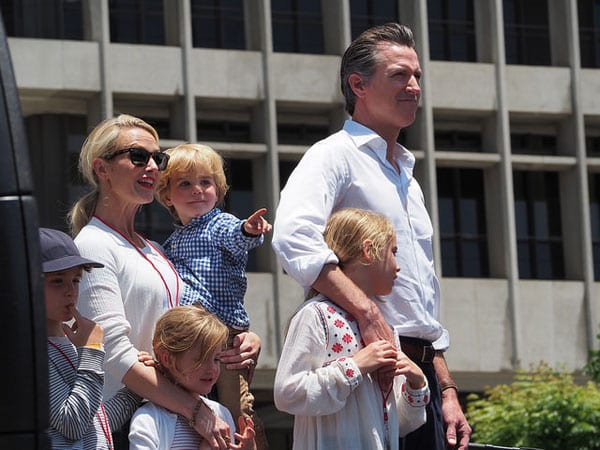
January 9, 2019; Ed Source
Earlier this week, Gavin Newsom, a Democrat, was sworn in as California’s 40th governor. Yesterday, he submitted his budget, which includes over $1.8 billion in spending to boost early childhood education. As Zaidee Stavely explains, the money will support “a range of programs, from helping parents care for their small children at home to identifying developmental delays early.”
During his campaign, Newsom plans to focus on children from birth to age 3, a promise he made during his campaign, in addition to expanding preschool for four-year-olds.
“We need to emphasize prenatal care and the first three years of a child’s life when nearly 85 percent of brain development occurs,” Newsom wrote in a 2017 position paper.
Among the program elements that Governor Newsom proposes are the following:
- $100 million to expand a home-visiting program, in which nurses and social workers visit young, low-income parents to give health and parenting advice
- $100 million for developmental screenings, by which pediatricians and other health care providers use to ask parents and guardians if their babies and toddlers are meeting milestones, such as crawling, picking up small objects, or speaking their first words
- $247 million to expand child care facilities on college campuses for student parents
- $500 million for upgrading or establishing child care facilities and providing professional development for child care providers
- $750 million to boost kindergarten availability
- $125 million to support expansion of preschool
Newsom is also seeking to expand paid family leave for parents of newborns from six weeks to six months, although that expansion would be phased in gradually. The six months could be split between parents as they choose. As Emily Peck notes in the Huffington Post, six months paid leave, while beyond that which is offered by any US state, still pales in comparison to existing paid family leave policies in many other nations. Indeed, some countries, such as Germany and Japan, offer 12 months paid family leave.
Sign up for our free newsletters
Subscribe to NPQ's newsletters to have our top stories delivered directly to your inbox.
By signing up, you agree to our privacy policy and terms of use, and to receive messages from NPQ and our partners.
Stavely notes that some of the proposed expansions—especially those concerning home visits and developmental screenings—have garnered broad support among children’s advocates. As Stavely explains, with the home visit program, nurses and social workers regularly visit low-income parents and their babies, from pregnancy to age two, to give them one-on-one advice and answer questions about their children’s development, health, and learning. These programs, she adds, “have been shown to have long-term benefits for children’s reading and math skills, in addition to improving their health and mental health, and to help mothers get high school diplomas or GEDs and better jobs.”
The nonprofit Children Now has estimated that less than three percent of California families receive such home visits. “It’s definitely a big deal,” California Now president Ted Lempert tells Stavely.
Developmental screenings, Stavely explains, help “diagnose developmental, behavioral or social delays early and get children the interventions needed as soon as possible. The American Academy of Pediatrics recommends that all children receive these screenings at least three times before they turn 3 years old, but only a fifth of California children receive them, one of the lowest rates in the country, according to the Data Resource Center for Child & Adolescent Health. Families of color are particularly affected, as doctors and other health providers are less likely to ask them about their children’s development than white families, according to researchers with the American Academy of Pediatrics.”
Newsom, Stavely adds, also plans to phase in preschool for all low-income four-year-olds over three years. “Currently,” notes Stavely, “only 14 percent of children under two and 38 percent of 3-year-olds who are eligible for subsidized child care in California are actually enrolled,” according to the Palo Alto-based Learning Policy Institute.
Of course, submitting a budget does not necessarily result in legislative approval. But with Democrats enjoying a 29–11 majority in the state senate and a 60–20 majority in the state assembly, prospects for much of Newsom’s proposed budget to become law are high.—Steve Dubb











